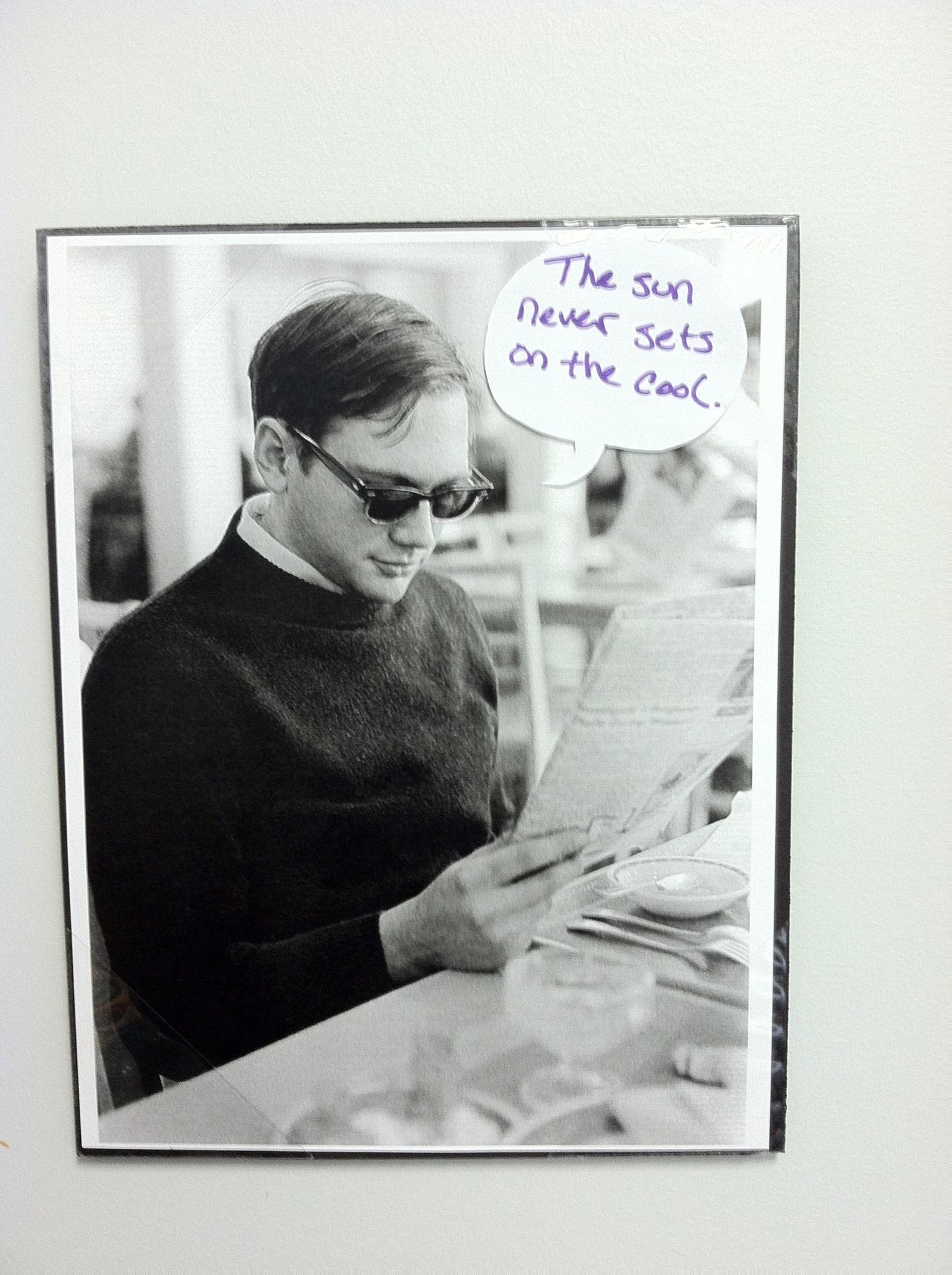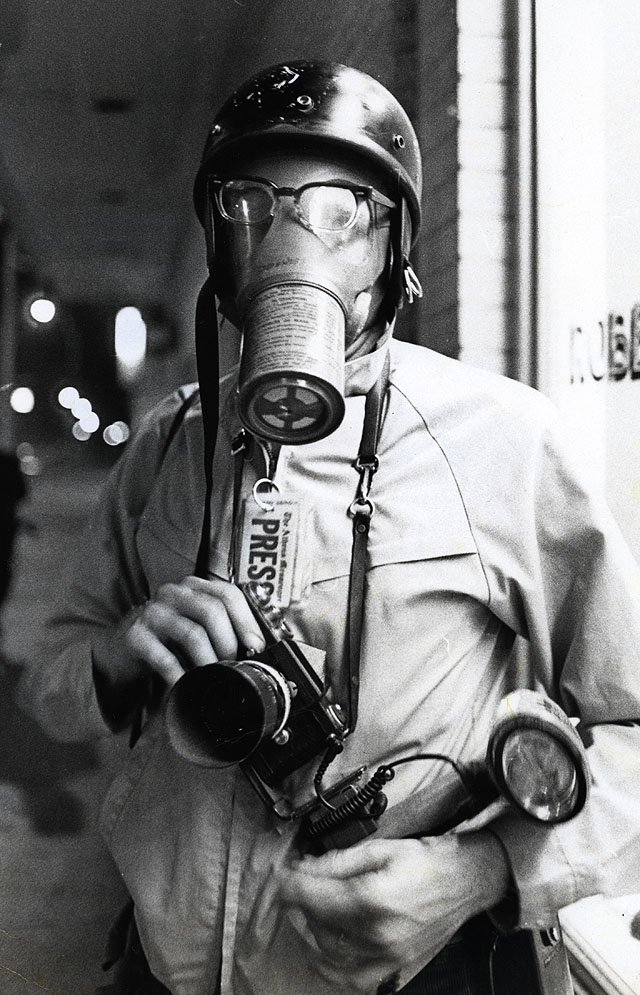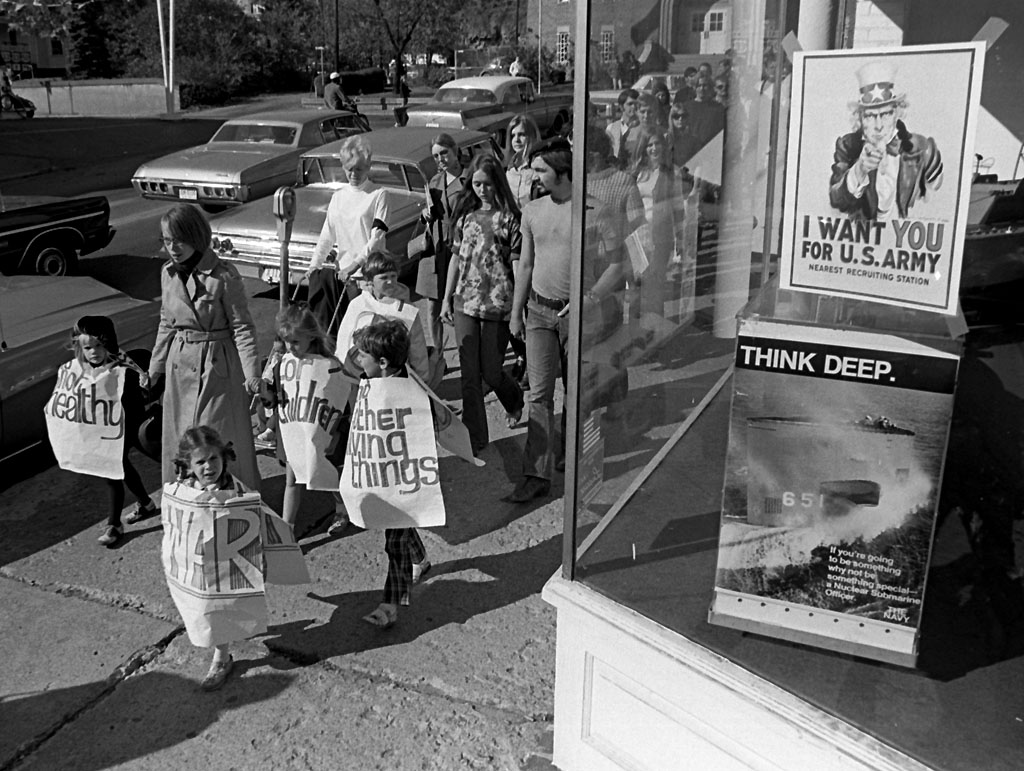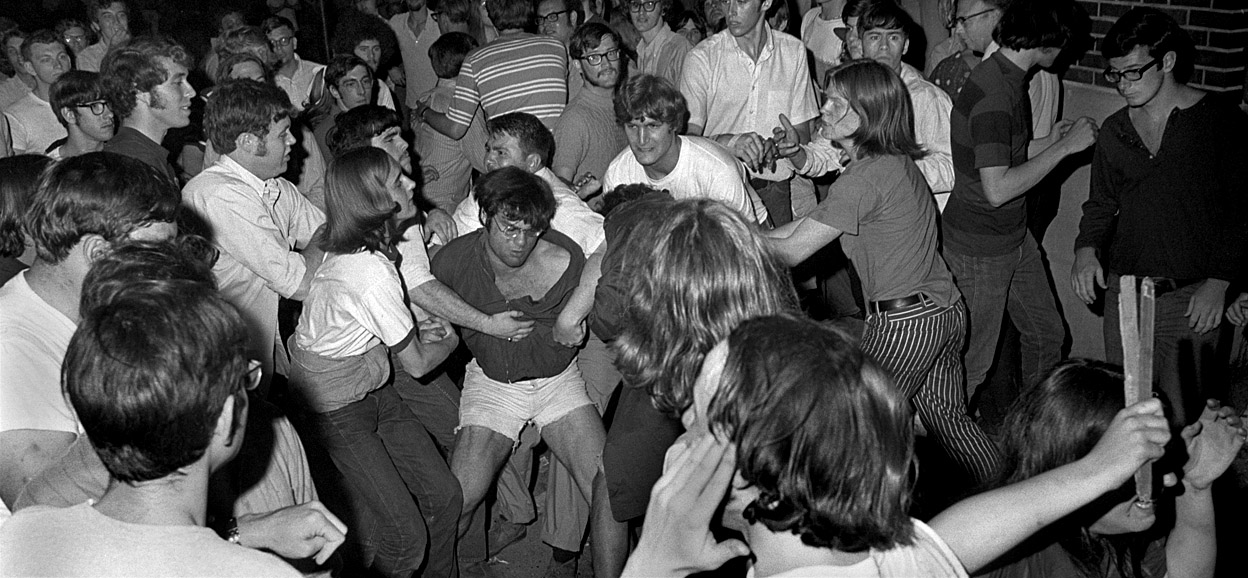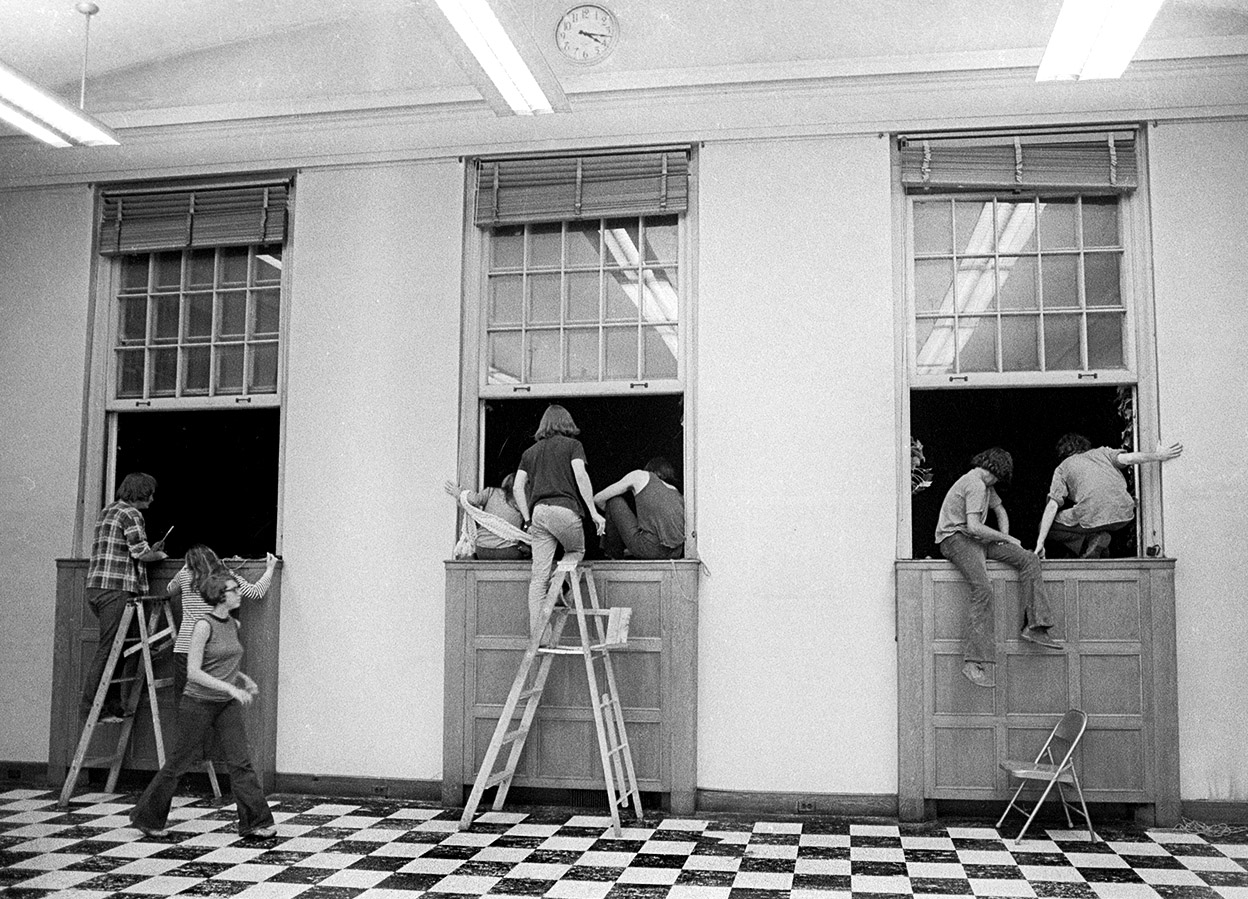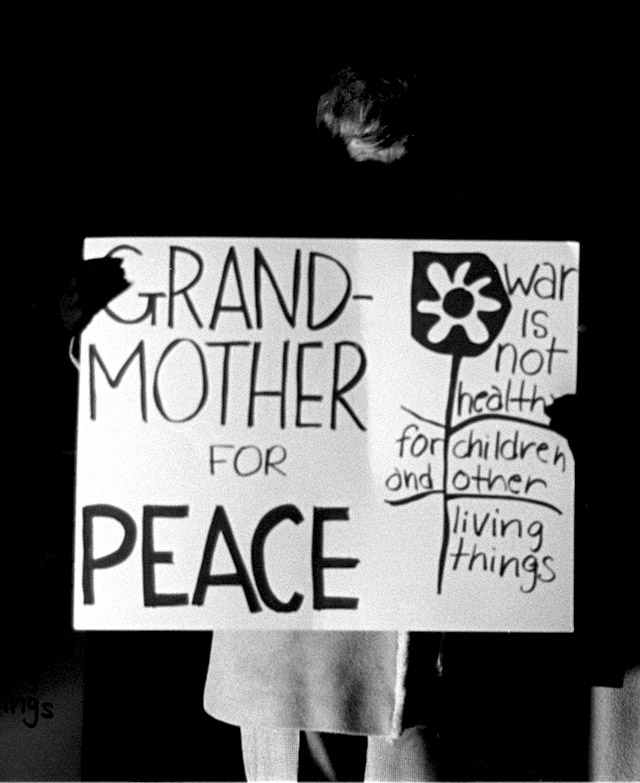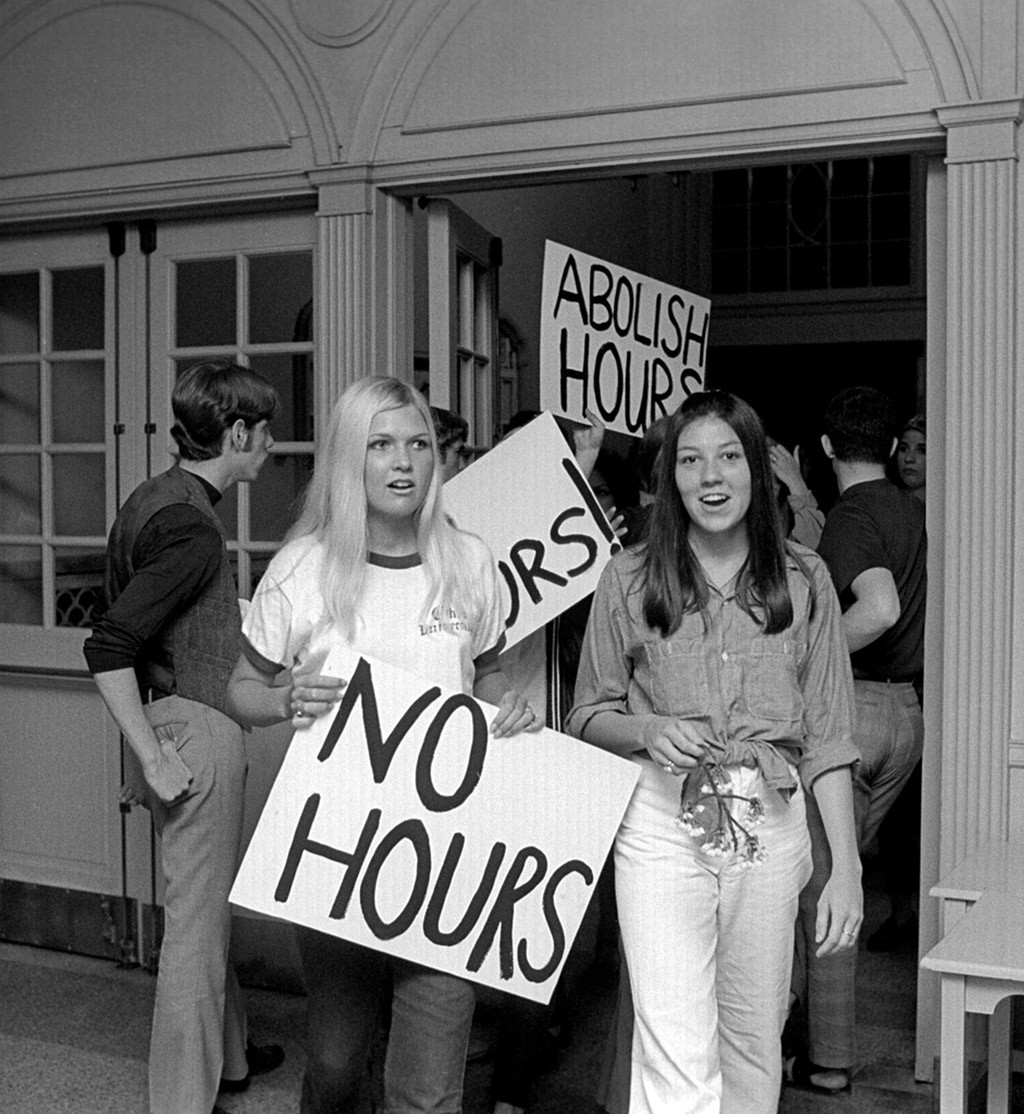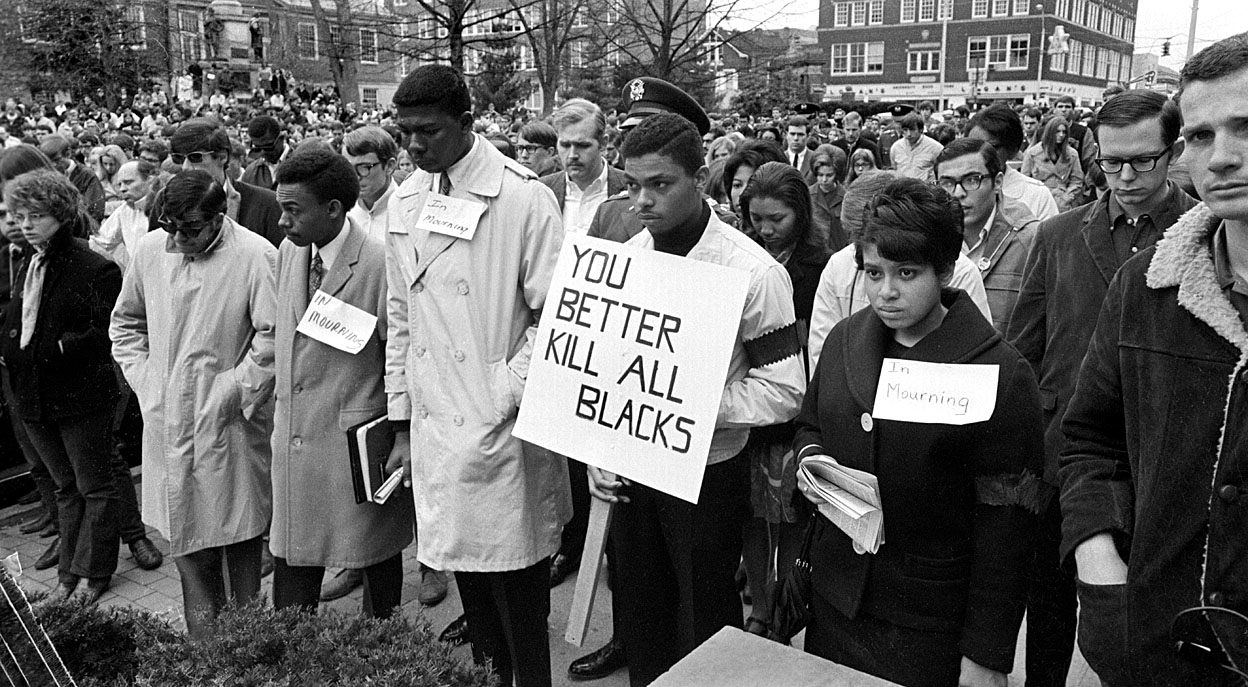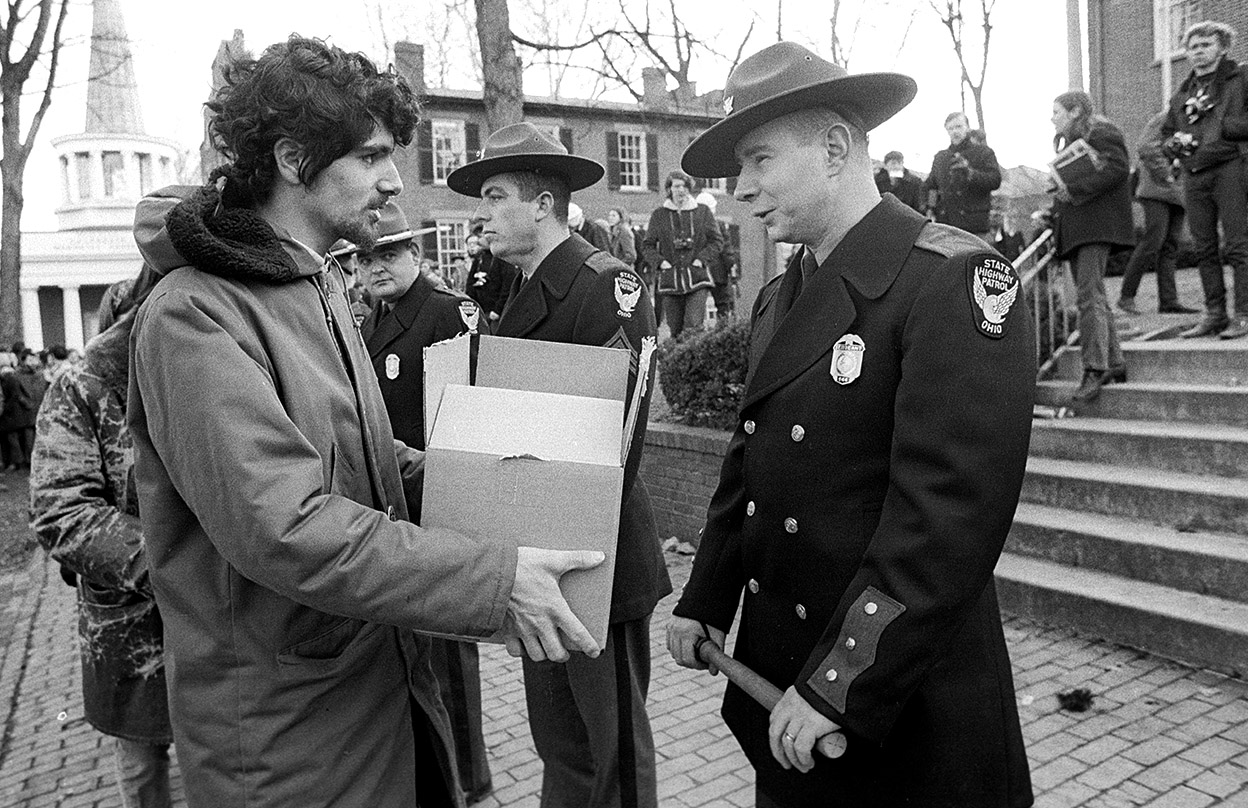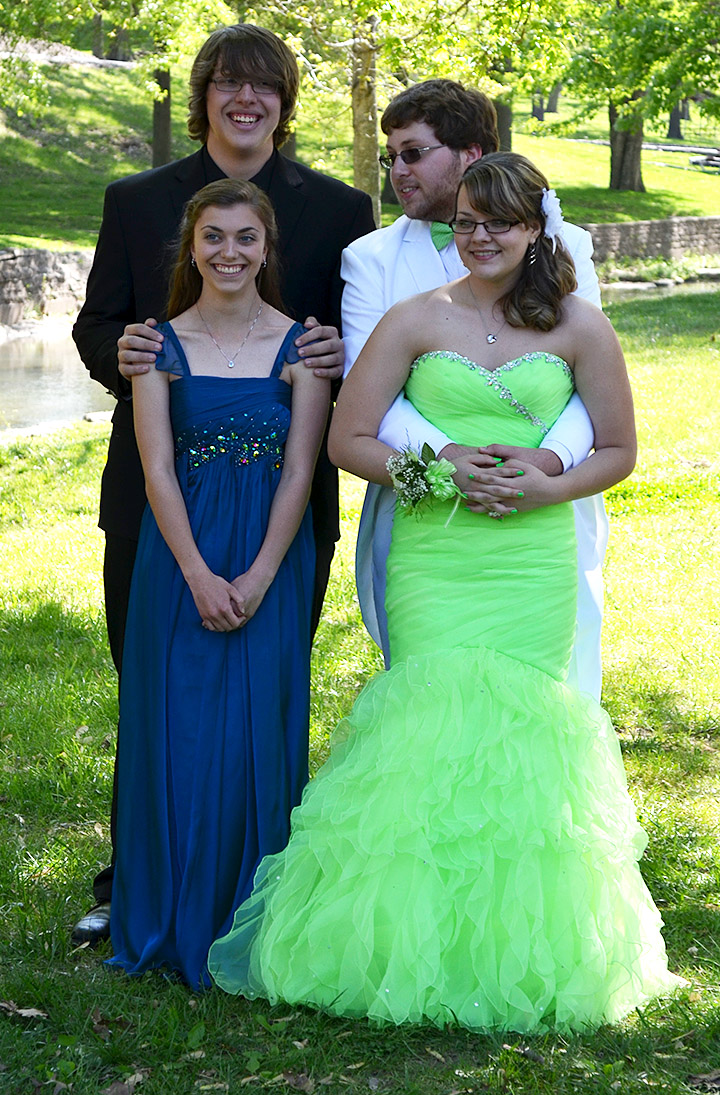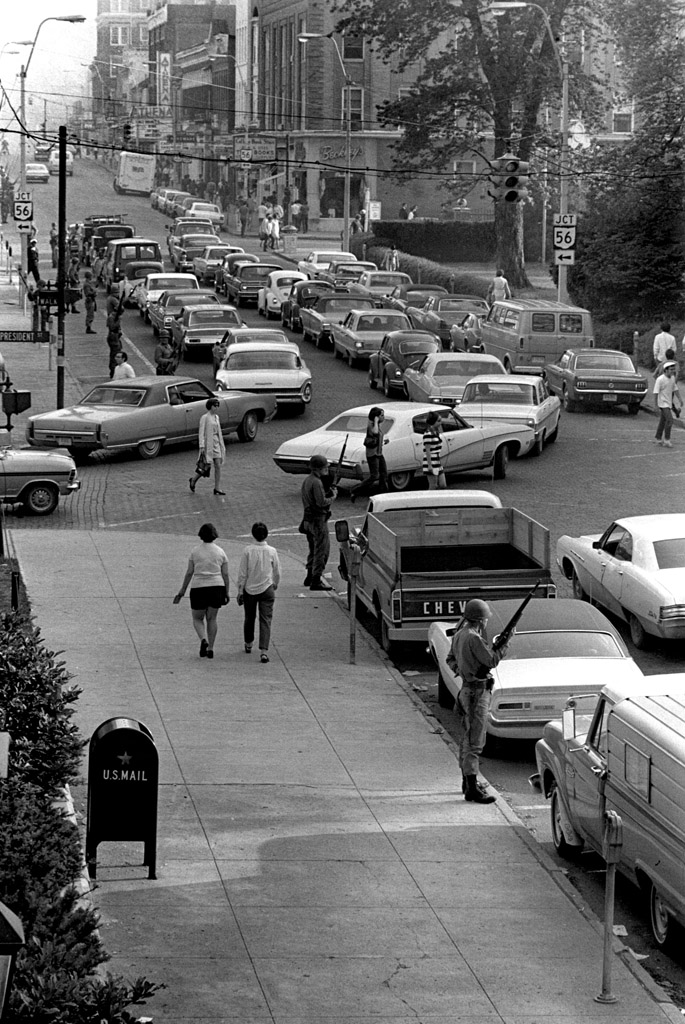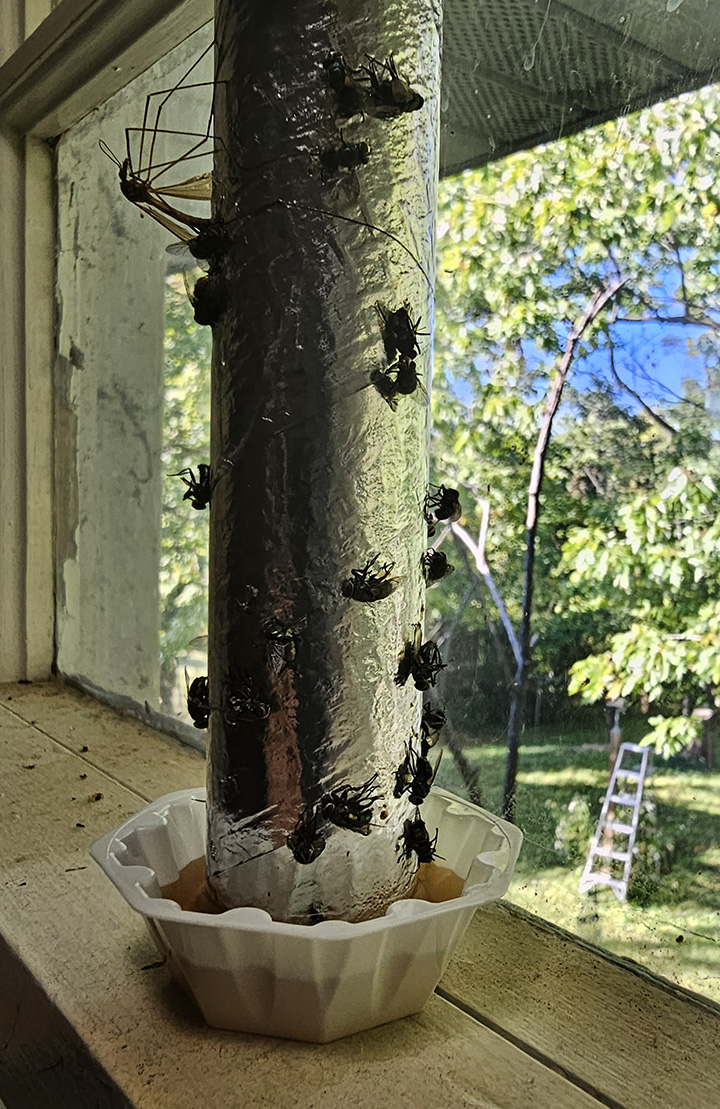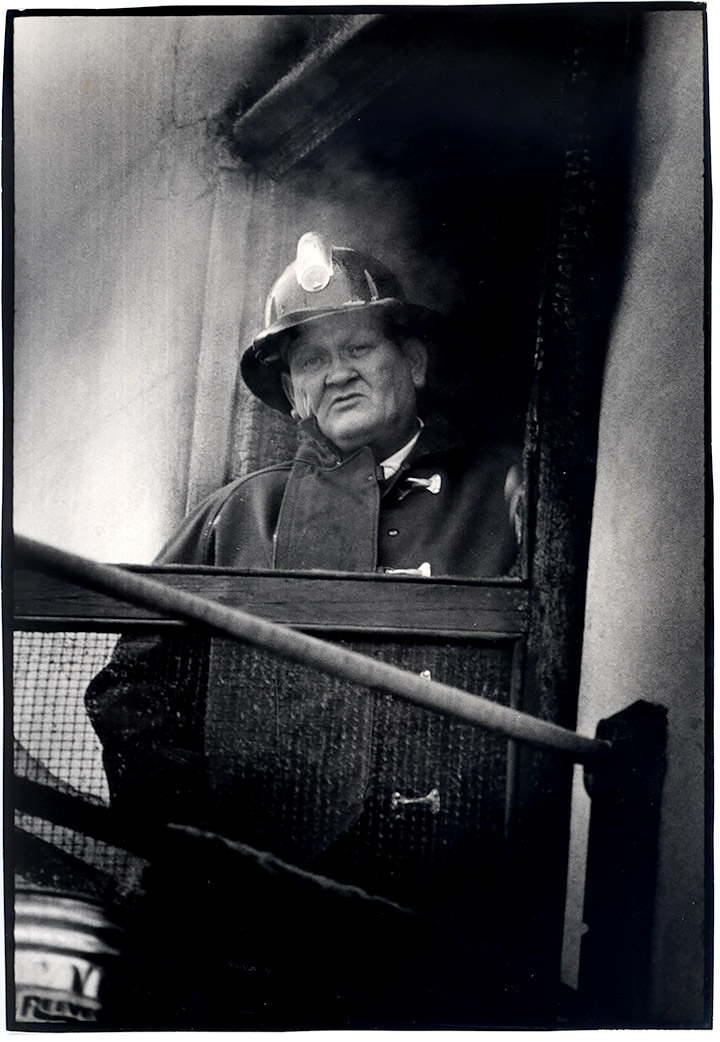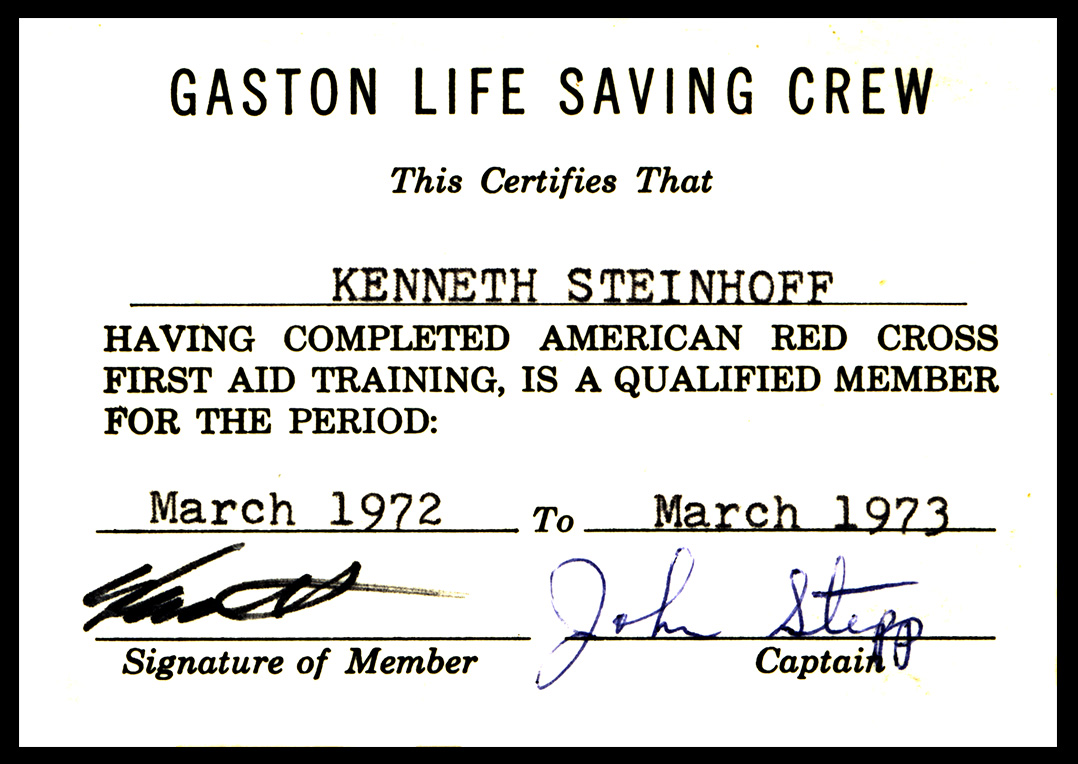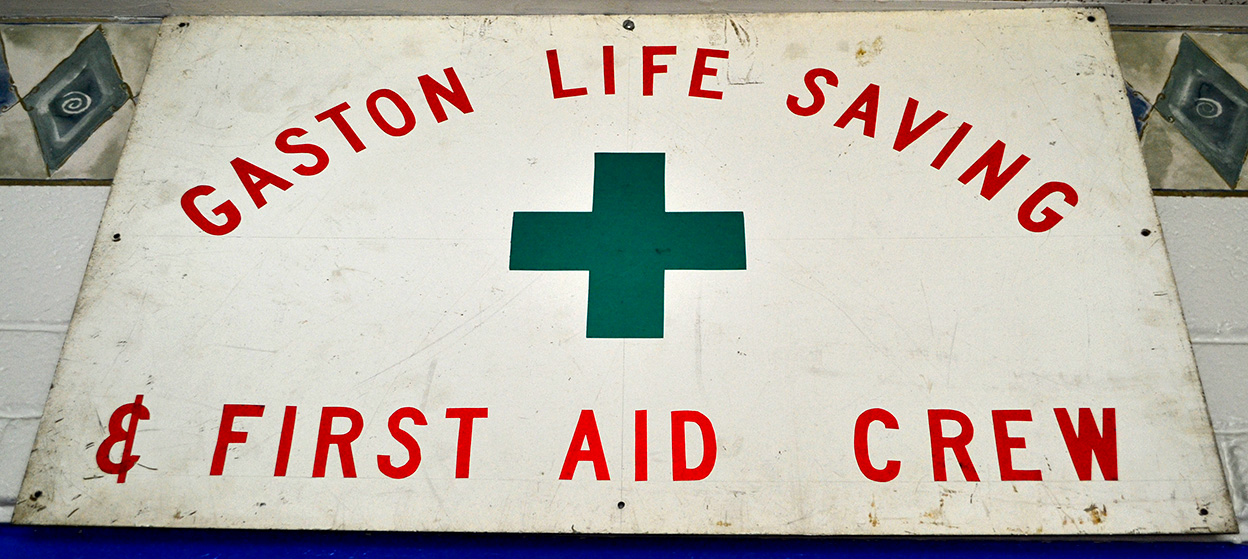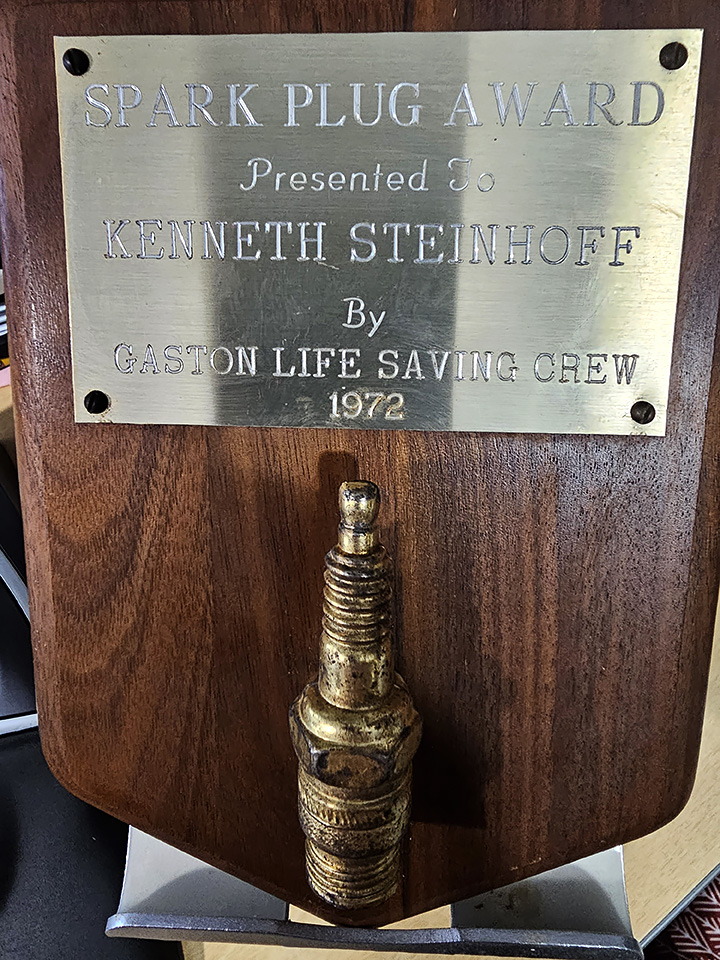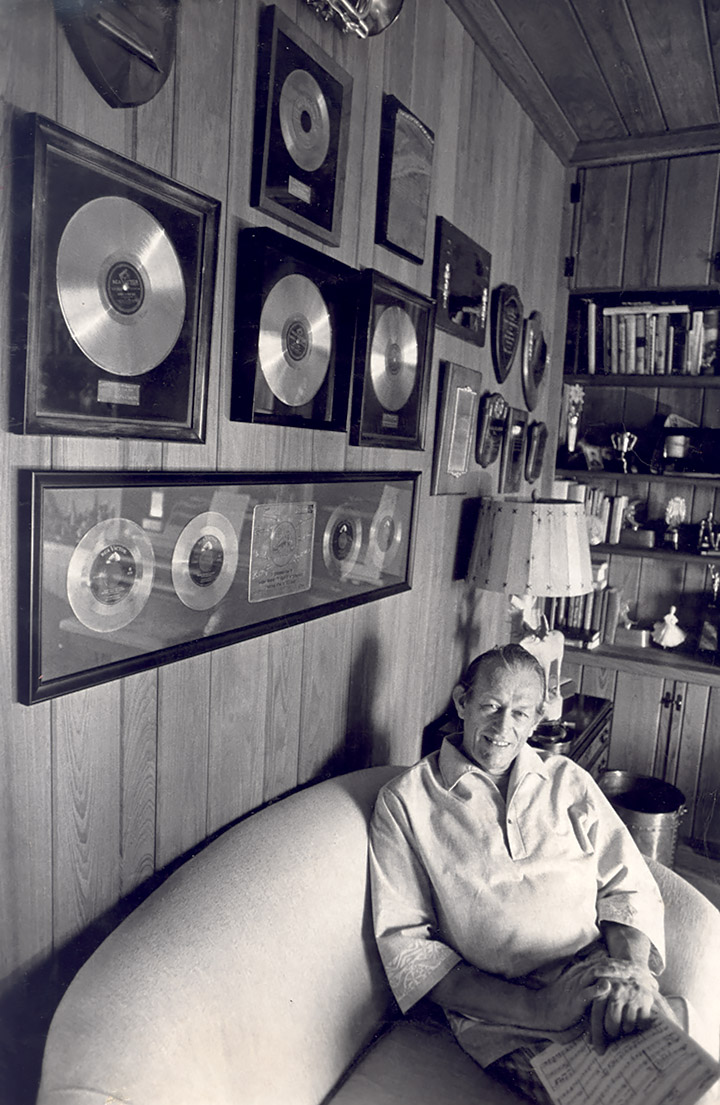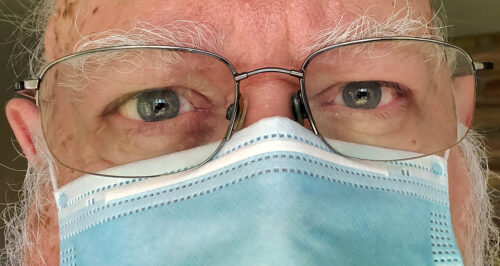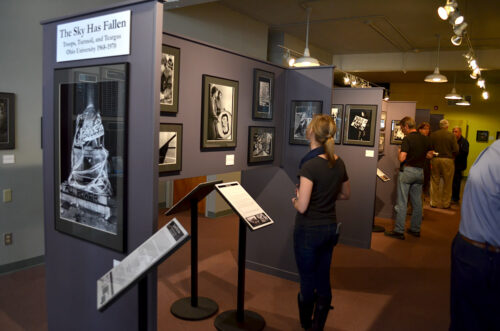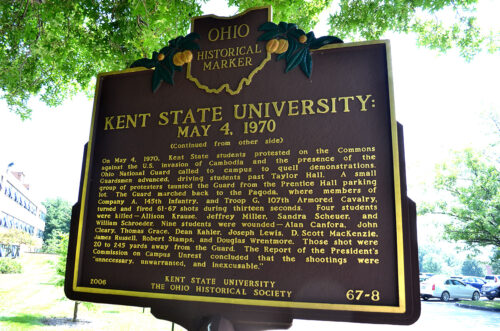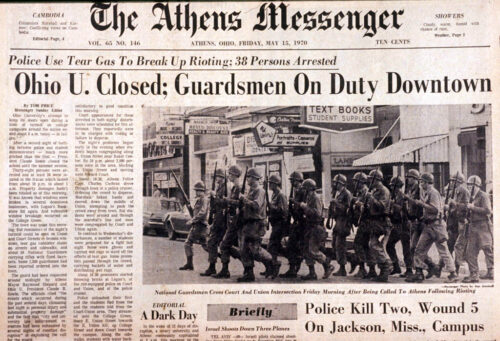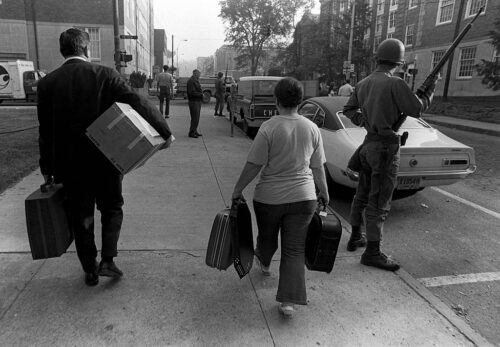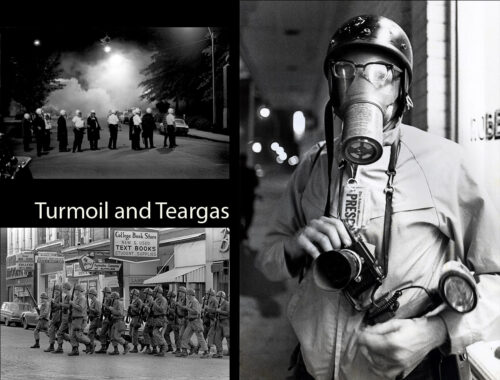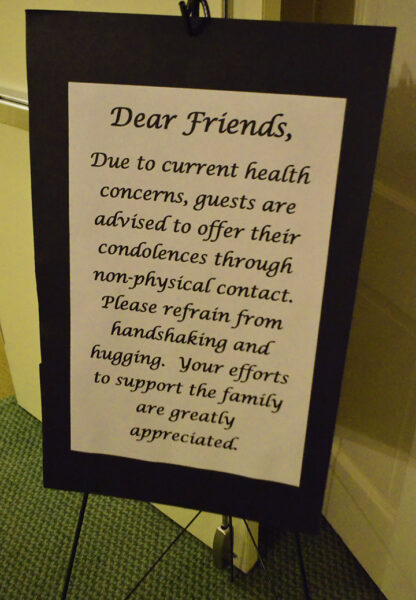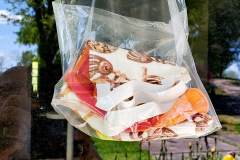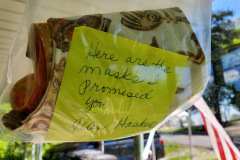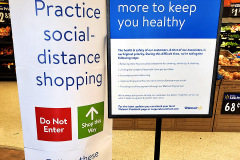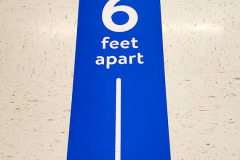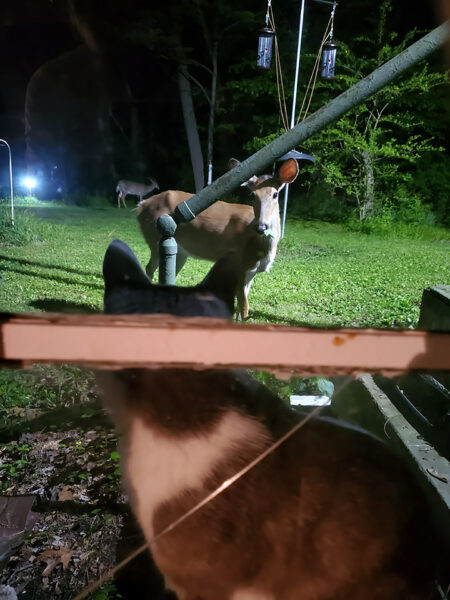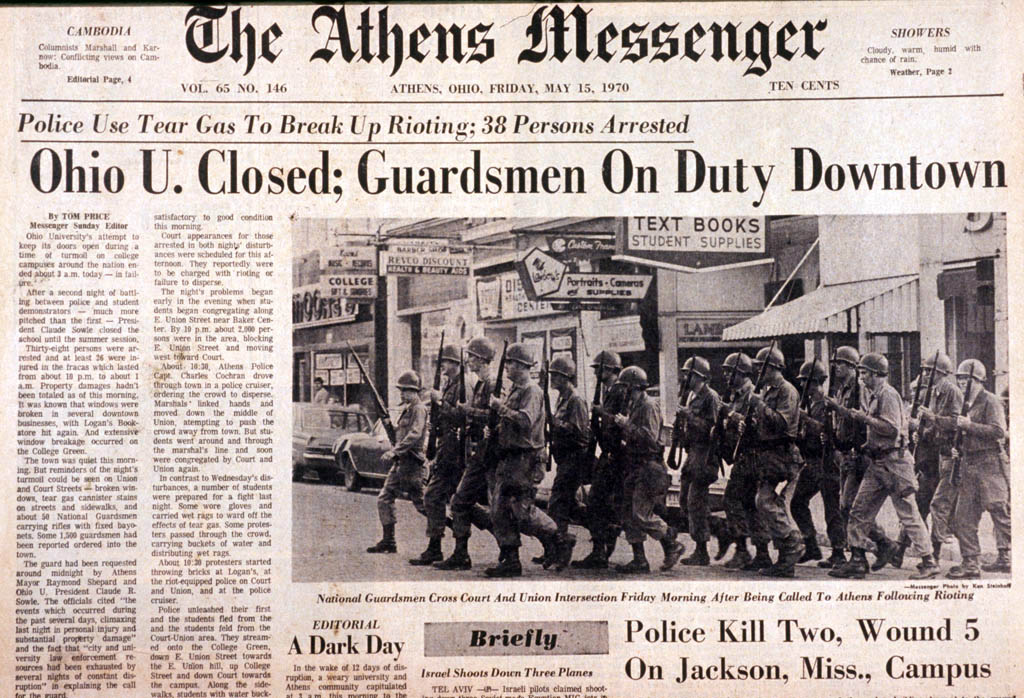
Several years ago, John J. Lopinot, my old friend and chief photographer, thought that after half a century we were pretty much done with the topic of May 4.
He’ll probably continue to send me “NEVER FORGET” notes, though, until we lose either the transmitter or the receiver (or both).
What caused me to take another bite of an aging apple?
Why the change?
I was listening to an old playlist the other afternoon when John Fogarty came on singing this snippet:
Did you hear ’em talkin’ ’bout it on the radio
Did you try to read the writing on the wall
Did that voice inside you say I’ve heard it all before
It’s like Deja Vu all over again
Day by day I hear the voices rising
Started with a whisper like it did before
Day by day we count the dead and dying
Ship the bodies home while the networks all keep score
We’re getting older
[Note: this was taken when I was having breakfast in Scott Quad in 1967. The annotation was done by an irreverent Curator (now Director) Jessica of the SE Ohio History Center ]
A Facebook friend posted some memories noting that we were coming up on the 54th anniversary of the Kent State killings. I’m thinking about what could be a major project for Year 55.
The sad fact is that a lot of us may not be around to observe Year 60. So, we have to tell our stories while we’re still around.
I’m going to post links to many of the photos I took during the protest era. I’d love to have names and current contact info for as many as possible so I could interview and photograph some of us who lived through this era.
On our way to get riot gear
We were on our way to Kent
This post appeared on my bike blog in 2009. It recounted about how another photographer and I were going to stop at a surplus store in Marietta for gas masks and other riot gear before heading up to Kent State.
Along the way, we got the word about the shootings, picked up our gear and headed back to Athens.
Shortly after we crossed over into Athens county, a deputy pulled us over.
“We got a call from a surplus store over in Marietta that some student hippy-types were buying up riot gear and heading to Athens. You wouldn’t know anything about that, would you?”
I confessed that “that would be us.”
“Do you know anything I should know?” he asked.
“Just being ready,” I replied. “Your guess about what’s going to happen is as good as mine.”
Protest era timeline
From start to finish, first pass
This was my first pass at going through my film an creating a timeline from peaceful marches to the closing of the university.
There’s a huge gallery, but the software that created it was “improved,” so it’s a little hard to navigate. Sorry.
Frat boys attack
Student vs students
A line of frat boys and jocks lined up to administer some street justice to students who didn’t look like them. It was one of the few student-on-student encounters I saw, and it didn’t last long.
Chubb Library occupied
A night spent in Chubb Library
The empty Chubb Library was occupied. Damage was minimal, if any.
On the other hand, this was the night newlywed Lila was going to host her first ever dinner party for us newsies. Unfortunately for me, all of us were otherwise occupied, and cell phones hadn’t been invented yet.
Sings of the times
A mixture of sign-carriers
It might have been a cold night in Athens when I shot these in 1968.
O.U. is not your mother
The birth of student rights
Restrictions on OU women were less draconian that those at SE MO State College, but the women challenged dorm hour rules.
Martin Luther King National Day of Mourning
Not the usual rites of spring crowd
A solemn salt-and-pepper crowd spontaneously took over Court and Union. A miscue by Athens PD Capt. Charlie Cochran came close to touching off a serious riot.
Dean Kahler is an inspiration
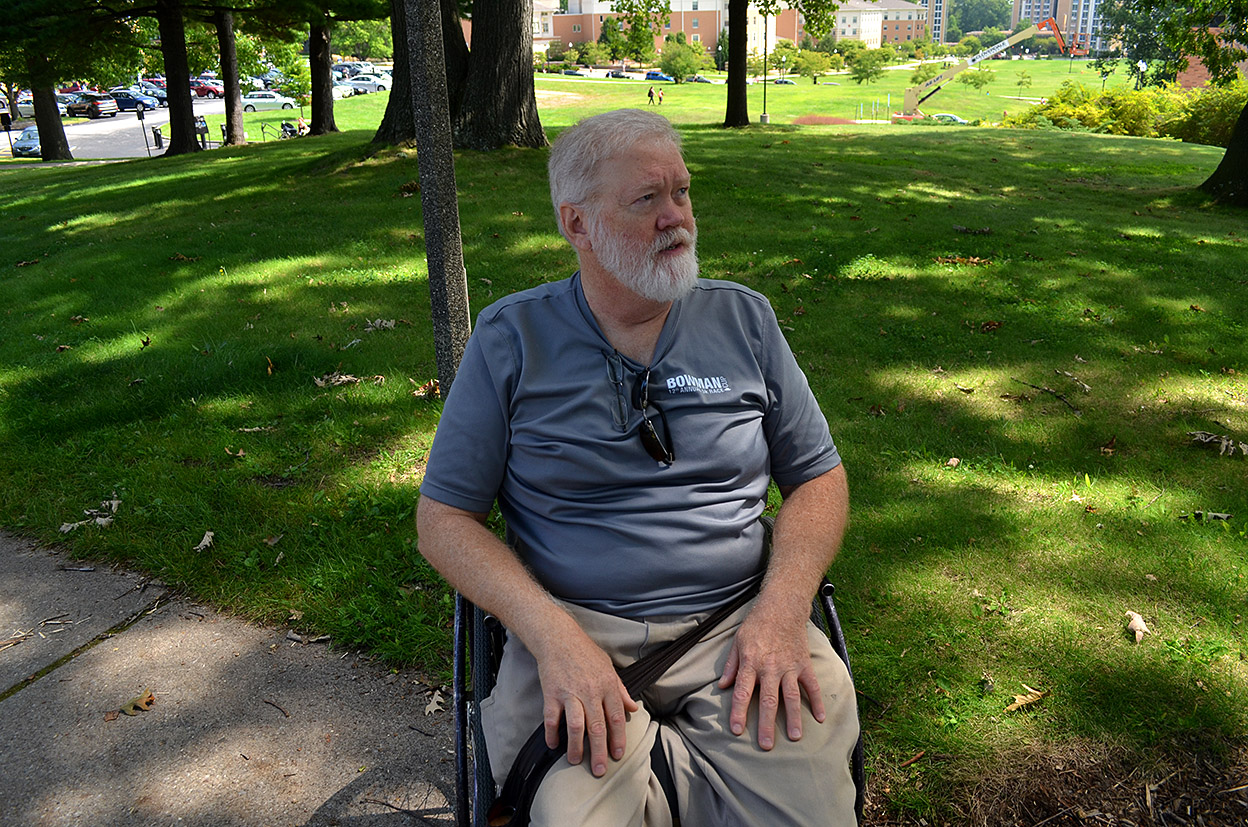
Paralyzed by a Guard bullet
Dean Kahler, was paralyzed when the National Guard opened fire. He was an innocent bystander 300 feet away from the closest shooter.
Follow the link to hear Dean in his own words.
“I knew I had been shot because it felt like a bee sting. I knew immediately because my legs got real tight, then they relaxed just like in zoology class when you pith a frog,” he said.
Kent State Pagoda

Seeing it made it real
I remember the first time I went to Washington, D.C., and was overwhelmed when I discovered that buildings I had only seen in print and on TV were real.
Seeing the Kent State Pagoda where the Guard went on their killing spree brought May 4 to life for me.
It’s not all grim
I was amused at this exchange
The student was offering a state trooper sandwiches and drinks. The lawman’s good-natured expression seems to be saying, “You’ve got to be kidding me if you think I’d eat something you made.”
Different memories
Compare and contrast
Jackson High School students were preparing for their prom in 2014. They will have entirely different memories of May 4 than us Boomers.
How soon they forget
You mean something happened here?
I climbed the steps of Lindley Hall to recreate this photo in 2013 when I was in town for an exhibit.
Some students saw me, so I walked over and said, “You know, the last time I stood on that landing and took a picture looking down Court Street it was May 15, 1970. Tear gas was wafting through the air and there was a National Guardsman with a rifle spaced about every 25 feet.”
“Really? Something happened here?” one of them asked, giving me a “is this old geezer harmless?” look.
Portrait of a pandemic
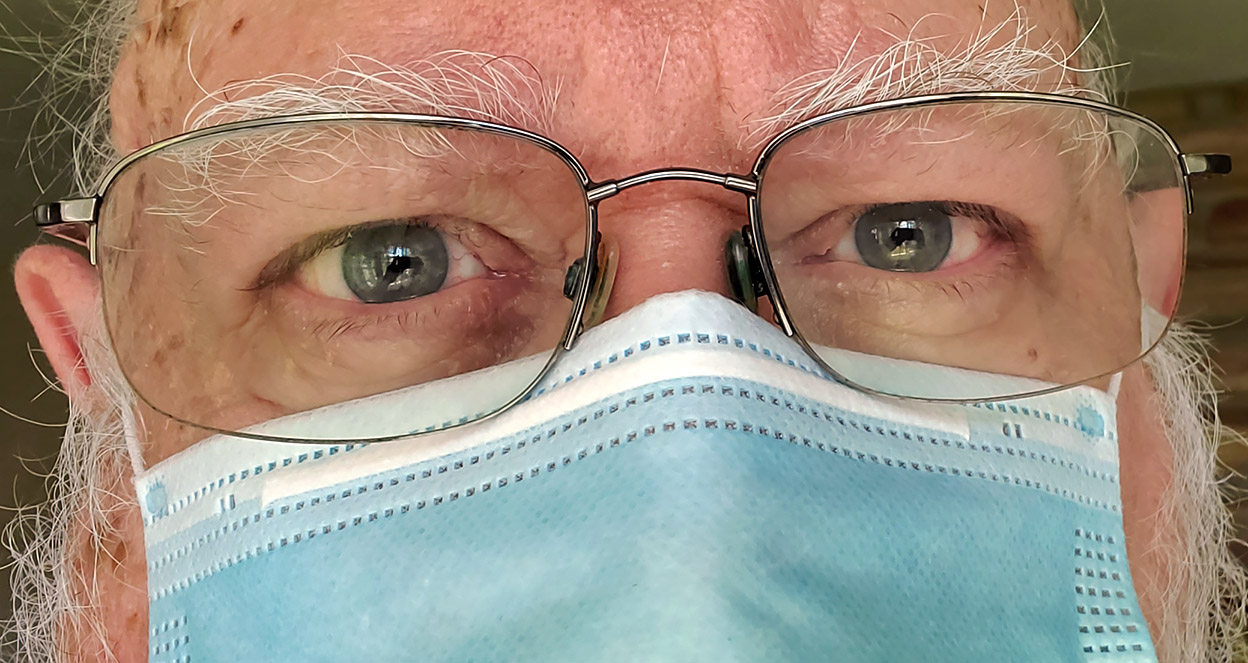
So much for going back to Athens
Curator Jessica and I were well on the way to making plans for the 50th anniversary of May 4 when the plug was pulled on the world.
Maybe you all will give me the info I need to do a proper accounting for 2025.

